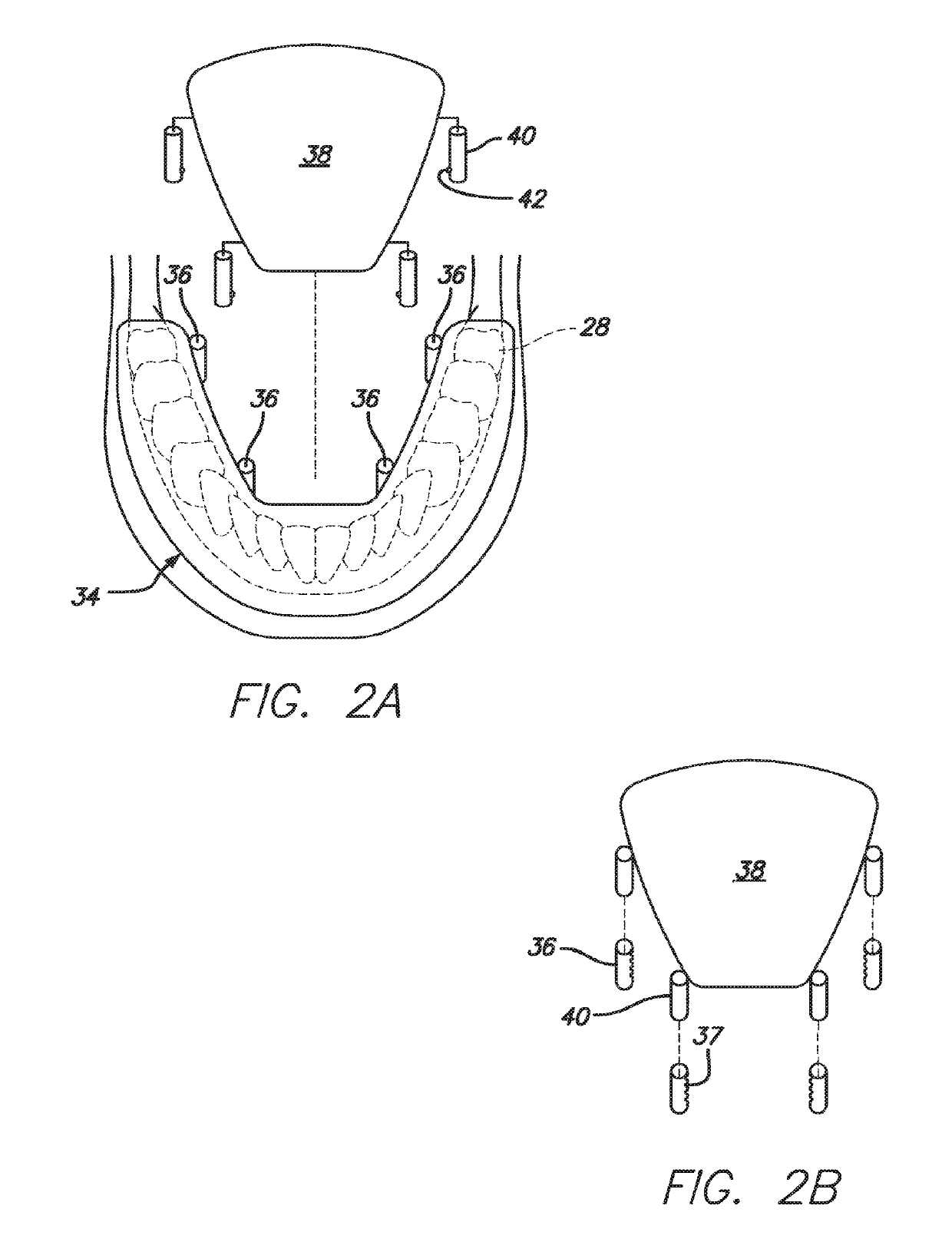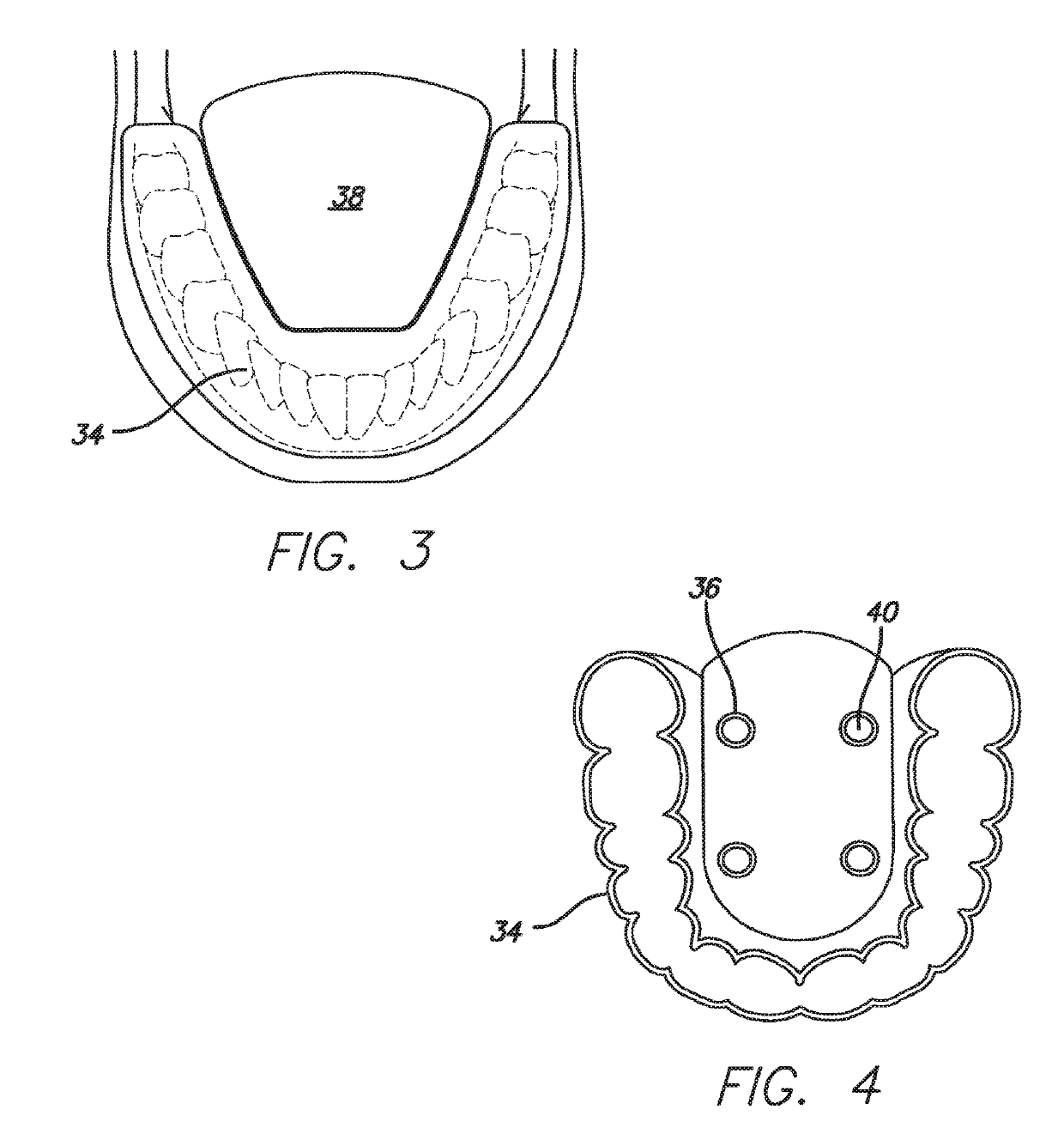Dental Sleep Apnea Device
a sleep apnea and device technology, applied in the field of sleep apnea, can solve the problems of affecting sleep, affecting sleep, and least uncomfortable and possibly harmful to the user, and affecting sleep
- Summary
- Abstract
- Description
- Claims
- Application Information
AI Technical Summary
Benefits of technology
Problems solved by technology
Method used
Image
Examples
Embodiment Construction
[0022]Accordingly, as depicted in FIG. 1, a user's oral cavity and oropharynx 20 is shown as including upper and lower lips 22 and 24, upper (maxillary) and lower (mandibular) teeth 26 and 28, a tongue 30, and an airway or air passage 32, among other parts.
[0023]Referring to FIGS. 2a and 2b, the apparatus and a method relating to sleep apnea, as embodied in the present invention, is embodied as a bite block 34 which is configured and molded to encompass lower teeth 28. Attached to bite block 34 are a plurality of receiving cylinders 36, preferably four in number, appropriately positioned within the interior of the bite block. Each receiving cylinder includes a plurality of holes 37 extending along its length. A tongue restrictor 38 is positioned above the bite block and has a plurality of connecting rods 40, preferably four in number, appropriately placed about the exterior of the tongue restrictor and aligned with receiving cylinders 36. Tongue 30 is disposed to reside under tongue...
PUM
 Login to View More
Login to View More Abstract
Description
Claims
Application Information
 Login to View More
Login to View More - R&D
- Intellectual Property
- Life Sciences
- Materials
- Tech Scout
- Unparalleled Data Quality
- Higher Quality Content
- 60% Fewer Hallucinations
Browse by: Latest US Patents, China's latest patents, Technical Efficacy Thesaurus, Application Domain, Technology Topic, Popular Technical Reports.
© 2025 PatSnap. All rights reserved.Legal|Privacy policy|Modern Slavery Act Transparency Statement|Sitemap|About US| Contact US: help@patsnap.com



